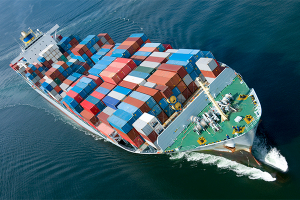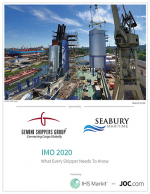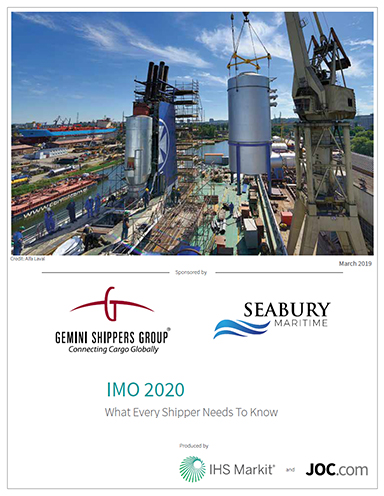IMO 2020: What Every Carrier and Shipper Needs To Know
This whitepaper details that the lack of industry standard for fuel-surcharges computation or a clear picture of the underlying costs for low-sulfur fuel allows participants to only roughly estimate its economic impact.
With less than 6 months before the International Maritime Organization (IMO) regulation on sulfur oxide emission goes into effect, carriers and shippers alike are facing an uncomfortable uncertainty over its potential effects on costs and freight rates as they enter the 2019-2020 trans-Pacific contracting period.
The 2020 deadline to reduce sulfur oxide emissions to 0.5 percent m/m is one of the most significant regulations impacting liner shipping in recent memory.
Lacking an industry standard for fuel-surcharges computation or a clear picture of the underlying costs for low-sulfur fuel, participants can only roughly estimate its economic impact.
Several factors affecting a carrier’s calculation of the fuel surcharges add complexity, making transparency ever so paramount to building trust on both sides.
The intention of this whitepaper, produced by Seabury Maritime in cooperation with Gemini Shippers Group, is to promote open dialogue between carriers and shippers by providing insight and a general understanding around metrics used behind bunker calculations.
The IMO is the United Nations agency responsible for implementing global maritime regulations after they are ratified by a number of member states.
On Oct. 27, 2016, it's Marine Environmental Protection Committee (MEPC) agreed to implement a global 0.5 percent m/m sulfur oxide emissions limit, effective Jan. 1, 2020.
The current global limit is 3.5 percent m/m sulfur oxide. Airborne sulfur oxide is a dangerous pollutant, especially near population centers, and is a leading cause for acid rain. Studies have shown that sulfur oxide is a cause of respiratory diseases such as asthma.
This exhaust limitation can be met in various ways including:
- Low-sulfur-compliant fuel oil use.
- Low-sulfur alternative fuel use, such as Liquefied Natural Gas (LNG).
- Exhaust gas cleaning system, aka “scrubbers,” installation.
Each of these solutions has its own advantages, disadvantages, and complexities.
What’s Related


Favorites





